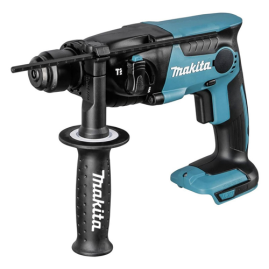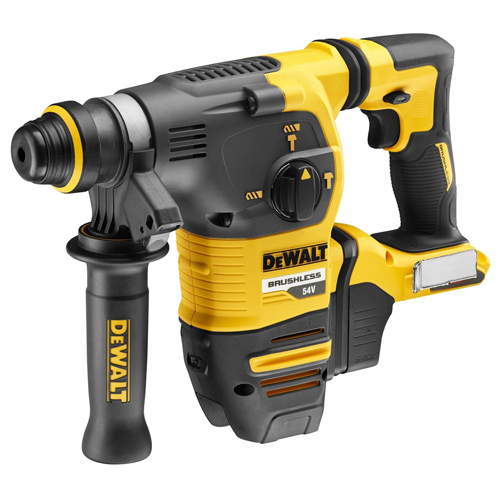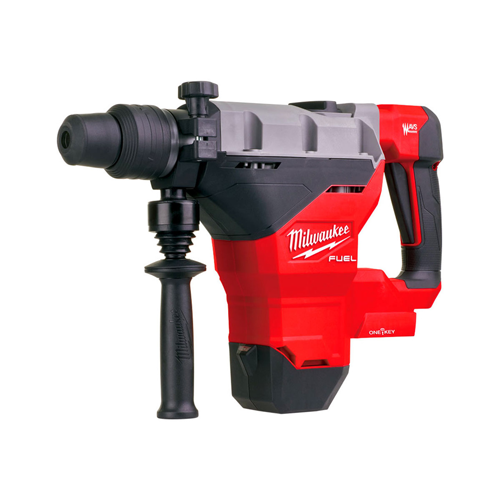SDS Drill Buying Guide
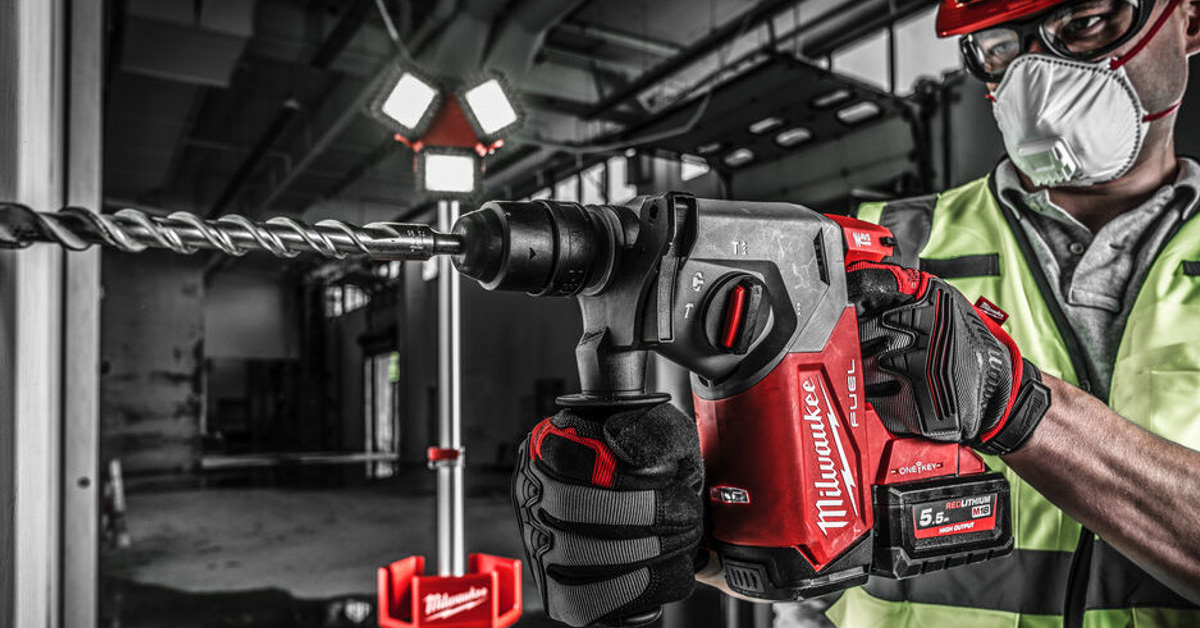
Whether you’re a professional tradesman or just a keen DIYer, sometimes there are jobs that require a bit more power than what standard combi drills offer. In these situations what you want is an SDS drill.
In this buying guide we’re going to cover how SDS drills work, what to consider when buying an SDS drill, and our top picks.
What is an SDS Drill?
First off, we need to understand what an SDS drill is, and how it works.
An SDS drill, also known as a hammer drill or rotary hammer drill, is a type of heavy-duty power tool which is designed for drilling through tough materials such as masonry, concrete, brick and steel. Due to their excellent power, performance and efficiency, they are ideal for a wide range of professional and DIY applications.
SDS stands for Slotted Drive Shaft, which refers to the specialized slots or indentations at the end of the drill’s shank, which allows for specialist SDS drill bits to be fitted. These SDS drill bits are typically much longer, wider, and more durable than the more common drill bits, which is necessary for drilling into harder materials.
How does an SDS Drill work?
When the tool is powered on, a hammering action thrusts the drill bit forwards into the material and applies pressure. This hammer motion is driven by a piston which fires the bit forward before pulling it back in a concentrated and precise movement.
The drill bit’s slots feature a pair of sprung ball bearings which allow for the SDS bit to be inserted into the chuck and be locked in place. This helps provide extra security and ensures it stays in place, whilst also improving performance by reducing friction in the drill.
SDS, SDS+ and SDS Max Explained
You’ll quickly begin to notice that there are 3 different types of SDS drills:
- SDS
- SDS Plus
- SDS Max
Both SDS and SDS+ drills have the same chuck design however SDS Max differs in the drill bit and chuck system. Let’s take a look at each
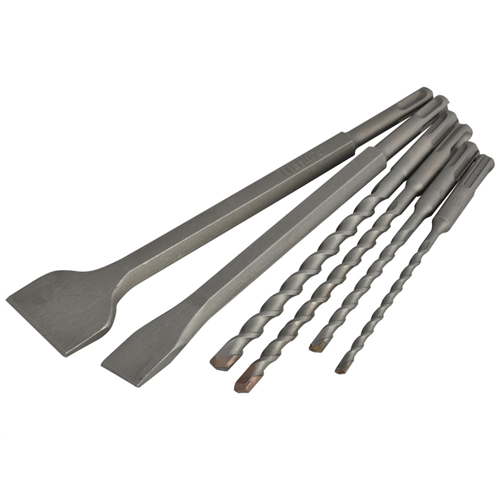
Faithfull SDS Plus Chisel & Drill Bit Set
SDS vs SDS Plus
A common source of confusion is the differences and compatibility between SDS and SDS plus drill bits. Simply put – both SDS and SDS Plus drill bits are completely interchangeable, as they both use 10mm shanks
The main difference between the two is that SDS drill bits feature 2 splines in the shank, whereas SDS plus drill bits feature an extra 2 splines to hold it in the chuck more securely.
Due to the narrower shank these drill bits are best used for DIY work although they are suitable for reasonably light to heavy professional jobs.
SDS Max
SDS Max drill bits are considerably longer and wider than SDS or SDS Plus drill bits.
Featuring an 18mm wide shank, they include even more indentation to provide better grip in the chuck, but it means that they aren’t compatible with standard SDS or SDS+ drills.
Due to the bigger size they are ideal for use with serious, heavy-duty demolition tasks which smaller drills aren’t able to handle.
Drilling Modes
Most SDS drills are versatile and able to handle a variety of different materials and applications.
Nowadays many of the top SDS drills offer three modes of operation:
Rotary Drilling – The more traditional mode of drilling, where the chuck is set to rotary mode and the drill bit bores through a material in a rotary movement
Hammer Only – The rotary action is disabled, with the hammer mechanism being enabled to effectively turn the tool into an electric chisel
Rotary Hammer – Both the rotary drill and hammer mode are combined to give the drill bit a rotary hammering movement for heavy-duty demolition applications
You can find SDS drills with either all 3 of these modes, or just rotary hammer and rotary only modes. For the most demanding tasks however, you would always opt for a 3-mode drill.
Factors to Consider
When browsing for your SDS drill there will be a few key factors to take into consideration, depending on what you’ll be using the drill for.
Corded or Cordless
Power source is important for any tool, so you should consider whether to go for a corded or cordless model.
Corded SDS drills will of course require you to be near a power source however they offer excellent power and efficiency, without the need to constantly recharge batteries. They can also be cheaper than cordless models.
Cordless SDS drills are often more popular due to the added mobility and flexibility they offer, as they don’t require a power cord or a nearby power source. As they run on batteries however, you will need to keep an eye on the battery level and pause work to recharge it.
Power & Speed
The power rating of the drill effectively translates to the drilling rate and depth of the hole. Usually measured in Watts, you will want more power for heavy-duty tasks on tougher materials, while lighter work won’t require as much power. Anything over 400-500W will work well for big jobs, and anything under is best for DIY tasks.
The drill’s speed also governs how fast it is able to bore the hole. Measured in RPM, you will again want to look for a higher number for professional tasks.
Size & Weight
If you plan on using the drill for long sessions then you should pay close attention to the drill’s size and weight. You don’t want to choose a huge SDS Max drills for light work around the house!
SDS and SDS+ drills are usually lighter and smaller in size, allowing you to more comfortably use them over longer periods of time. SDS Max drills however can be much heavier and bulkier, so you should only choose these if you need the extra power.
Toolden’s Top SDS Drills
Below we’ve put together a list of some of the best SDS drills for both professional trade use and light DIY jobs. Whether you’re looking for an budget SDS drill or a SDS Max demolition drill, we have what you’re looking for!
Best Budget SDS Drill
Makita DHR165ZJ 18V LXT 16mm SDS+ Rotary Hammer Drill
An excellent SDS drill at an affordable price, the DHR165ZJ packs 1.3J of hammer action and up to 5,200 impacts per minute in a lightweight, compact cordless design. It features both rotary hammer and rotary only, making it perfect for masonry, steel, wood and plastic.
It features:
- Variable speed control trigger
- One touch slide chuck for SDS Plus drill bit
- LED Job light for better visibility
- Electric brake for faster stopping
- Torque limiter that helps protect the internals
Best Professional SDS Drill
DeWalt DCH333N 54V FlexVolt 3-Mode SDS Plus Hammer Drill
The DeWalt DCH333N is a powerful 3-mode SDS+ drill that is compatible with DeWalt’s new 54V Flexvolt batteries for incredible runtime. The powerful brushless motor gives excellent performance with reduced maintenance, making this a perfect choice for tradesman and contractors. It features:
- Category-leading drilling performance – more than 66 holes per charge
- Best in class vibration at 8.5m/s², minimising user fatigue
- 3 modes for handling plaster, tiles, wood and metal
- Bright white LED job light
Best SDS Max Drill
Milwaukee M18 FHM-0C 18V FUEL SDS-Max Hammer Drill
Offering maximum power and performance in a cordless package, the Milwaukee M18 FHM-0C is one of the most advanced SDS Max drills around. The next generation POWERSTATE brushless motor and REDLINK PLUS electronics give superior performance, durability and run time for heavy duty tasks. Featuring:
- ONE-KEY™ tool tracking & security system
- AUTOSTOP™ shuts down the tool to protect the user after 45° of sharp movement
- Trigger lock on prevents users from having to hold the trigger
- Large anti-vibration back handle supports two handed drilling applications
- Service light indicator illuminates when the tool requires servicing
We hope this guide has helped you understand the differences between SDS Drills, how they work, and what type of drill meets your requirements.
At Toolden we stock a wide range of SDS+ and SDS Max drills for professional and DIY use. Take a look below!

